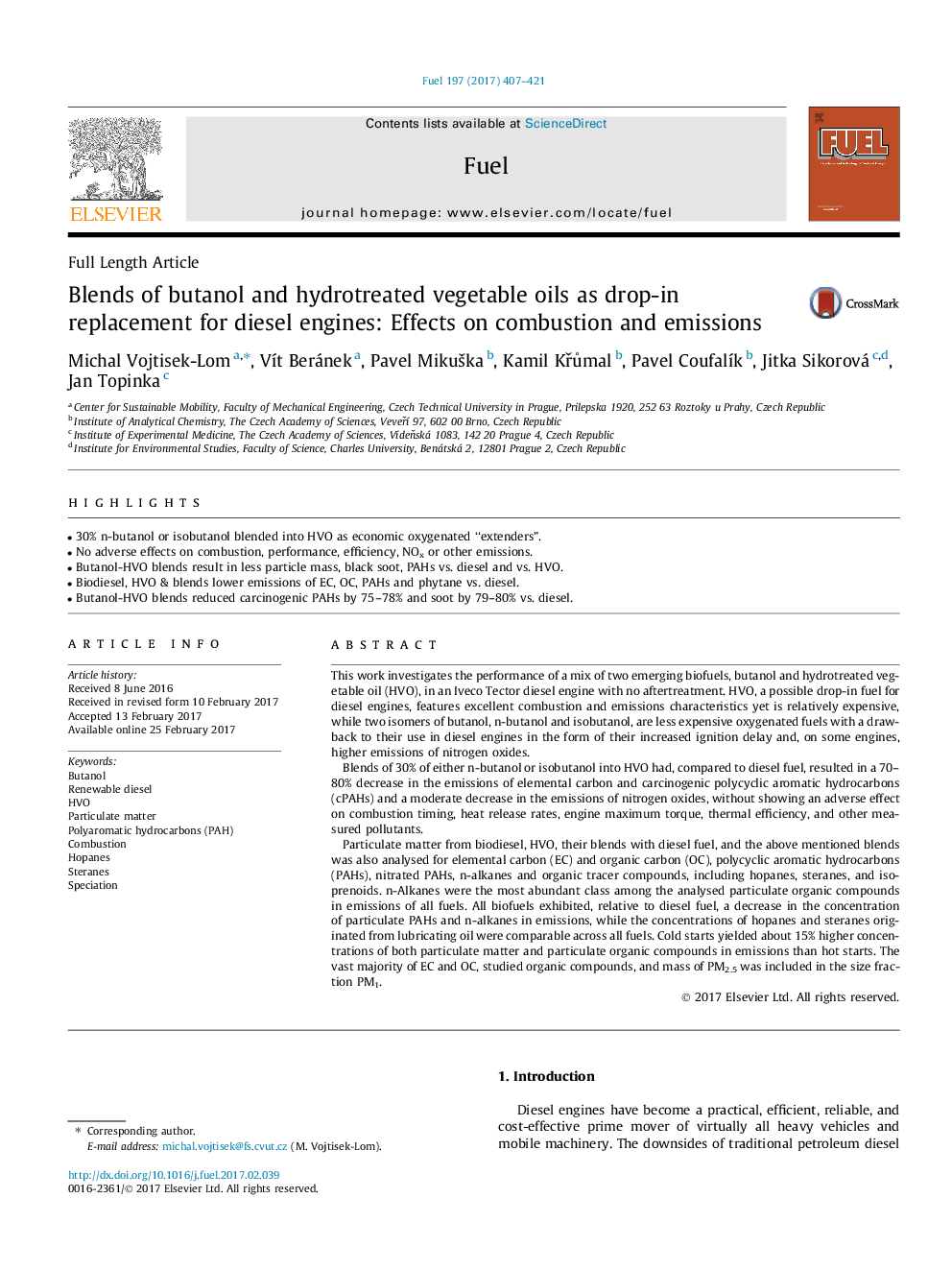| کد مقاله | کد نشریه | سال انتشار | مقاله انگلیسی | نسخه تمام متن |
|---|---|---|---|---|
| 6475257 | 1424967 | 2017 | 15 صفحه PDF | دانلود رایگان |
- 30% n-butanol or isobutanol blended into HVO as economic oxygenated “extenders”.
- No adverse effects on combustion, performance, efficiency, NOx or other emissions.
- Butanol-HVO blends result in less particle mass, black soot, PAHs vs. diesel and vs. HVO.
- Biodiesel, HVO & blends lower emissions of EC, OC, PAHs and phytane vs. diesel.
- Butanol-HVO blends reduced carcinogenic PAHs by 75-78% and soot by 79-80% vs. diesel.
This work investigates the performance of a mix of two emerging biofuels, butanol and hydrotreated vegetable oil (HVO), in an Iveco Tector diesel engine with no aftertreatment. HVO, a possible drop-in fuel for diesel engines, features excellent combustion and emissions characteristics yet is relatively expensive, while two isomers of butanol, n-butanol and isobutanol, are less expensive oxygenated fuels with a drawback to their use in diesel engines in the form of their increased ignition delay and, on some engines, higher emissions of nitrogen oxides.Blends of 30% of either n-butanol or isobutanol into HVO had, compared to diesel fuel, resulted in a 70-80% decrease in the emissions of elemental carbon and carcinogenic polycyclic aromatic hydrocarbons (cPAHs) and a moderate decrease in the emissions of nitrogen oxides, without showing an adverse effect on combustion timing, heat release rates, engine maximum torque, thermal efficiency, and other measured pollutants.Particulate matter from biodiesel, HVO, their blends with diesel fuel, and the above mentioned blends was also analysed for elemental carbon (EC) and organic carbon (OC), polycyclic aromatic hydrocarbons (PAHs), nitrated PAHs, n-alkanes and organic tracer compounds, including hopanes, steranes, and isoprenoids. n-Alkanes were the most abundant class among the analysed particulate organic compounds in emissions of all fuels. All biofuels exhibited, relative to diesel fuel, a decrease in the concentration of particulate PAHs and n-alkanes in emissions, while the concentrations of hopanes and steranes originated from lubricating oil were comparable across all fuels. Cold starts yielded about 15% higher concentrations of both particulate matter and particulate organic compounds in emissions than hot starts. The vast majority of EC and OC, studied organic compounds, and mass of PM2.5 was included in the size fraction PM1.
Journal: Fuel - Volume 197, 1 June 2017, Pages 407-421
